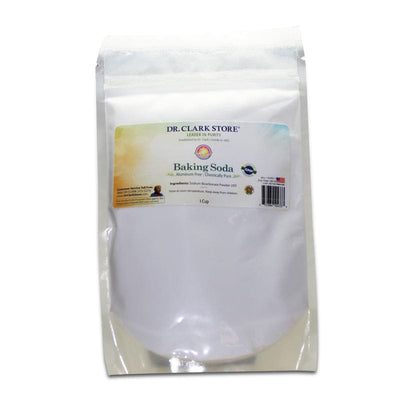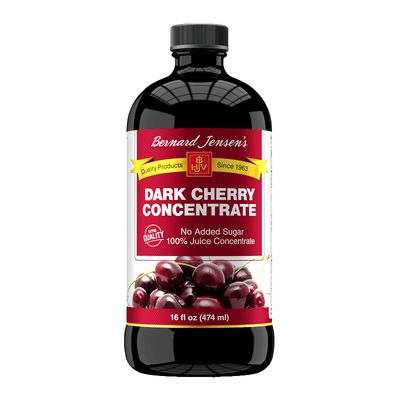Hydrogen Peroxide (H2O2): A Versatile Remedy

Hydrogen peroxide (H2O2) is widely celebrated for its versatility and effectiveness as a natural remedy. Whether it's disinfecting wounds, soothing sinus infections, or detoxing the body, H2O2 has emerged as a "wonder product" that goes beyond simple sanitation. But it’s more than just a household staple—its oxidation properties make it a helpful solution for a variety of health and wellness uses. This guide will take you through what hydrogen peroxide is, why it works so well, and how to safely integrate it into your personal care routine.
What Is Hydrogen Peroxide?
Hydrogen peroxide is a liquid with a simple but powerful chemical composition—two hydrogen atoms and two oxygen atoms. This combination produces a highly reactive and oxidizing agent, perfect for sanitizing and combating organic contaminants. Depending on its concentration, it is available in various forms:
- Household: Typically 3% concentration, often used for cleaning or disinfecting small wounds.
- Food Grade: 35% concentration, used for internal applications after proper dilution.
- Industrial/Electrical Use: Higher concentrations, strictly for non-medical or specialized purposes.
With its ability to break down into water and oxygen, hydrogen peroxide is a natural solution that's both effective and eco-friendly.
Why Is H2O2 Such an Effective Remedy?
Hydrogen peroxide is considered a top-notch natural remedy because it leverages oxidation to eliminate harmful microorganisms. Similar to ozone, H2O2 creates an oxygen-rich environment that inhibits the growth and survival of most bacteria, viruses, and fungi. The additional oxygen also helps boost the immune system, assisting in overall wellness. When applied to the skin or taken internally (under professional guidance), hydrogen peroxide breaks down into water and oxygen. This reaction gets to work destroying pathogens while promoting healing processes, making it valuable for both medical and household needs.
Hydrogen peroxide continues to emerge as a significant topic in scientific research, especially concerning its potential health benefits and therapeutic applications. Studies have explored its impacts in various contexts, ranging from its efficacy in wound care to its anti-cancer properties. Among these, research has shed light on the role of hydrogen peroxide in inhibiting the growth and migration of cancer cells, providing insight into its potential as a complementary treatment option.
One notable study by Zhang et al. (2016) examined the effects of hydrogen peroxide on lung cancer cells. The research revealed that hydrogen peroxide inhibits the growth and migration of lung cancer cells by targeting store-operated calcium entry channels. This mechanism helps suppress cancer cell proliferation and mobility, suggesting a pathway by which hydrogen peroxide could impede the progression of certain cancers. The study highlights the importance of further investigation into safe concentrations and clinical applications for this compound.
Similarly, another research effort conducted by Park et al. (2014) focused on the effects of hydrogen peroxide on breast cancer BT-20 cells. The study demonstrated that hydrogen peroxide induces apoptosis, or programmed cell death, in these cancer cells by downregulating GRP78/BiP, a protein involved in maintaining cellular stability under stress. This discovery signifies the compound’s potential in promoting targeted cancer cell death, paving the way for future therapeutic developments. The study reinforces the necessity of controlled use and professional oversight in exploring such treatments.
How Can You Use Hydrogen Peroxide?
H2O2 can be used in numerous ways, but safety and proper dilution are critical. Here's a breakdown of its applications:
1. Internal Use of Hydrogen Peroxide
Taking hydrogen peroxide internally is a debated practice, but some advocates claim potential health benefits when used cautiously and appropriately.
Dilution
- Always use food-grade hydrogen peroxide, NOT standard household types.
- For safety, dilute 1 part 35% hydrogen peroxide with 11 parts distilled water.
- Ensure the solution is properly diluted to avoid tissue irritation.
Dosage
- Start slow, with just 3-5 drops of diluted hydrogen peroxide in 8 oz of water daily.
- Gradually increase the dosage over time, but consult a healthcare professional to determine what works for your body.
Timing
- Take on an empty stomach for optimal absorption—at least one hour before or three hours after eating.
Precautions
- Not suitable for pregnant or breastfeeding women, or individuals with autoimmune disorders.
- Monitor for side effects, such as nausea or digestive issues, and discontinue use if they occur.
2. For Sinus Relief
Hydrogen peroxide’s antibacterial and antiviral properties make it effective for sinus infections:
- Mix diluted H2O2 and water for use in a nasal spray or rinse.
- This helps clear mucus and alleviate inflammation while killing bacteria or viruses in nasal passages.
3. For Wound Cleaning
Hydrogen peroxide disinfects wounds by killing bacteria:
- Use a 3% solution applied directly or diluted further if you have sensitive skin.
- Avoid overuse, as it may delay healing by affecting healthy tissue.
4. Parasite Removal
Taken internally, H2O2 can help eliminate anaerobic parasites by creating an oxygen-rich environment they can’t survive in. Follow proper dilution methods and consult a professional before use.
5. Dental Hygiene
Combat toothaches, plaque, and gum issues:
- Use a diluted H2O2 solution as a mouthwash or mix with baking soda to create a toothpaste. This can help remove bacteria and alleviate discomfort.
6. Body Detox
Hydrogen peroxide has detoxifying properties when taken internally (under guidance) or used externally in baths:
- For a bath, add 1 cup of 3% H2O2 to warm water and soak for 20-30 minutes.
- This strengthens immune responses and helps flush toxins from the body.
Safety and Precautions
Hydrogen peroxide is an incredibly potent compound, and its misuse can lead to adverse effects. Follow these precautions:
- Choose the Right Grade: Only use food-grade hydrogen peroxide for medical or internal purposes.
- Dilute Properly: Ensure the solution is diluted to avoid irritation or chemical burns.
- Consult a Healthcare Provider: Always get advice from a professional before using H2O2 for medical purposes, especially internally.
- Avoid Sensitive Areas: Use caution when applying hydrogen peroxide to sensitive tissues and open wounds.
- Store Safely: Keep hydrogen peroxide in a cool, dark place away from children and pets.
Why Should You Try Hydrogen Peroxide?
The flexibility and effectiveness of hydrogen peroxide make it a valuable addition to any health-conscious household. From cleaning wounds to potentially aiding in detox, it offers cost-effective solutions where other products might fail. However, its use requires caution, proper preparation, and professional guidance for safe and effective applications.







You have a typo above. You wrote that the book is, " One Minute Cute".
It’s actually, “One Minute Cure”.
I have used this method by using the 35% food grade internally by drinking diluted . I bought a book called one minute cute and followed that protocol. I can tell you it works.
You are going to have to learn to make your articles more user friendly, instead of trying to sound educated.
“targeting store-operated calcium entry channels.”
Worthless waste of words and space unless your audience is specifically already versed in such things.
You are going to have to learn to make your articles more user friendly, instead of trying to sound educated.
“targeting store-operated calcium entry channels.”
Worthless waste of words and space unless your audience is specifically already versed in such things.
Thank you for this great article! I would also mention to not use hydrogen peroxide for a mouthwash if a person has metal in their mouth because over time it can be corrosive.
Leave a comment